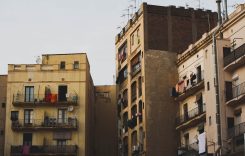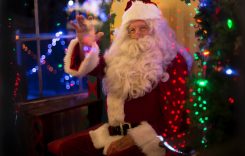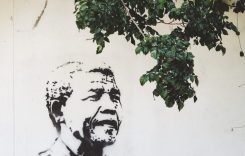In the shelves of the libraries embedded in the halls of the enormous house occupied by the Tropenbos Foundation, in the La Soledad neighborhood of Bogotá, there are some 300 theses on the tropical forest. After nearly forty years devoted to biological research and working with Amazonian communities, Carlos Rodríguez, its director, winner of the Alejandro Ángel Escobar Science Prize last year, observes them convinced of the urgency of finding new ways to disseminate local knowledge .
Last year, after several months ruminating ideas about it, he decided to create what he calls with enthusiasm “The Forest Wood Museum”. The main hall of the foundation became since then a carpentry with trunks of different species watered by the corners, shavings of wood on the tables, drawings and boxes everywhere.
The game begins by opening a small box with pieces of finely cut wood that one must match with the drawings of the trees that one of the indigenous artists linked to the foundation outlined. A guamilla? Caimo stone? Laurel? Freighter? Which one goes with which one? For a city dweller the game is frustrating. Successes will depend mainly on chance. For the old indigenous connoisseurs that Carlos has encountered along his journeys through the jungle, among the Muinanes, Uitotos, Matapís, Nonuyas and Cabiyaris, recognizing more than 500 species of memory is almost child’s play. Just look at the leaves, check the color of the wood, sometimes a simple smell, to recite the name.
With the last questions Carlos has already broken any intellectual ego. “Each tree has more than fifty relationships without counting insects,” he explains. Then comes the great moral of all this: “That is what we are disappearing when we burn or cut down a tree and in Colombia the rate of deforestation goes through 200,000 hectares of forest each year.” In each hectare of Amazonian tropical forest it is estimated that an average of 350 botanical species coexist. In the Colombian Amazonian Herbarium that the Amazon Scientific Research Institute (Sinchi) keeps, 8,200 species of plants of all types have been identified so far.
Work with a team of at least twenty indigenous researchers has collected wood samples from some 400 trees, photographed and drawn them. In a box of the smallest fit 25 samples of wood. Four of these boxes form the first volume that a student should have access to in indigenous schools, according to Carlos’ plan. That is, when finishing primary, each child must be able to identify one hundred species and analyze their ecological relationships. In baccalaureate the challenge rises to 400 species, which are stored in a piece of furniture that looks like a giant book. A book of the jungle.
Way Dairon Matapi, from the Villa Azul community, is one of the researchers who got involved in the project. With a photographic camera on his shoulder, he has gone back to the jungle next to his father. His mission has been to extract from the memory of old Uldarico Matapi everything he can. “Young people today are more interested in technology than in local knowledge. But by participating in this one realizes the importance of trees. It’s not just a tree but its relationships, “he says.
Achieving a dialogue between local knowledge and the Western world has been an obsession for Carlos. Through research scholarships for indigenous people, he has managed to create many bridges between the two cultures. Last year, the book Piraiba Illustrated Ecology of the Great Amazon Catfish, which compiled the work of almost twenty years with the fisherman Luis Ángel and the indigenous painter Confucio Makuritofe, received the Alejandro Ángel Escobar Award in the environmental category.
The book presents clear evidence to rethink the notions about the diets of the great Amazonian catfish. Years ago Carlos managed to direct and support the work of Abel Rodríguez, a connoisseur of the nonuya ethnic group, in Medio Caqueta, who dedicated himself to drawing all his botanical knowledge. A work that received the Prince Claus Prize of the Dutch Crown.
At this point, with the support of the GEF Heart of the Amazon and Natural Heritage program, they have managed to consolidate a large reference collection and sent “wood museums” to two indigenous schools. While making new samples and extending the project to other communities, Carlos dreams that it will also serve to take him to the universities and that the indigenous knowers interact with students from other regions of Colombia, with professors and researchers.
“May this raise self-esteem in the face of their knowledge and also transform the participation of indigenous people in universities,” he says. After playing with the Museum of Wood, it is hard to think of a tree burning in the Amazon and all the complexity that disappears when it is cut down.










